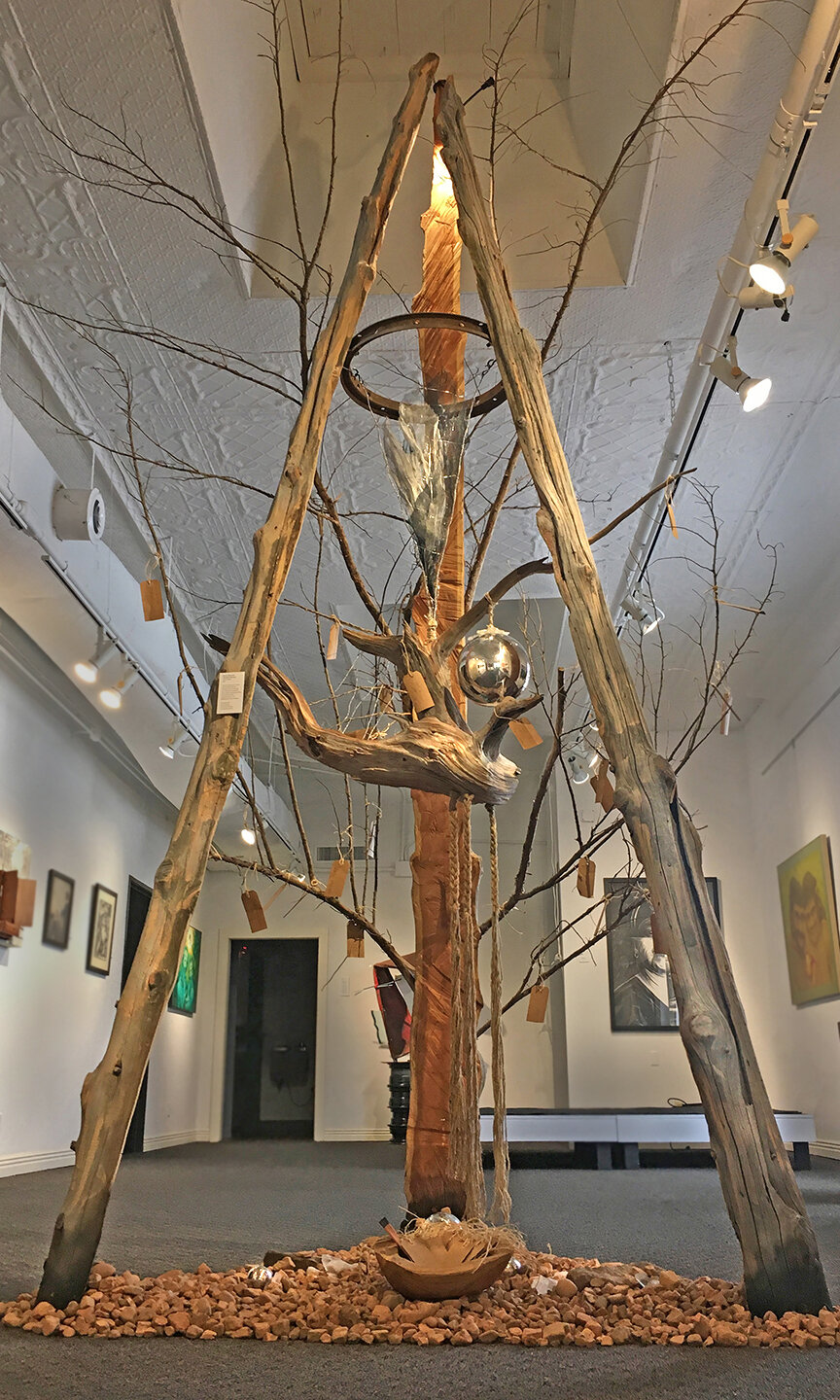Interview with artist Steven Schneider
Steven Schneider grew up in South Louisiana with a love of food and the outdoors – but that is part of the genetic code of folks born there. In 2014 Steven and his wife Cynthia moved to Northwest Arkansas on the White River where he continues to be inspired by the beauty of nature, captured in his paintings and sculptures. Steven’s works can be viewed at the Oxford Treehouse Gallery in Oxford, Mississippi, Greg Thompson Fine Art in Little Rock, Arkansas, The Art Collective Gallery in Rogers, Arkansas, and at schneiderarts.com.
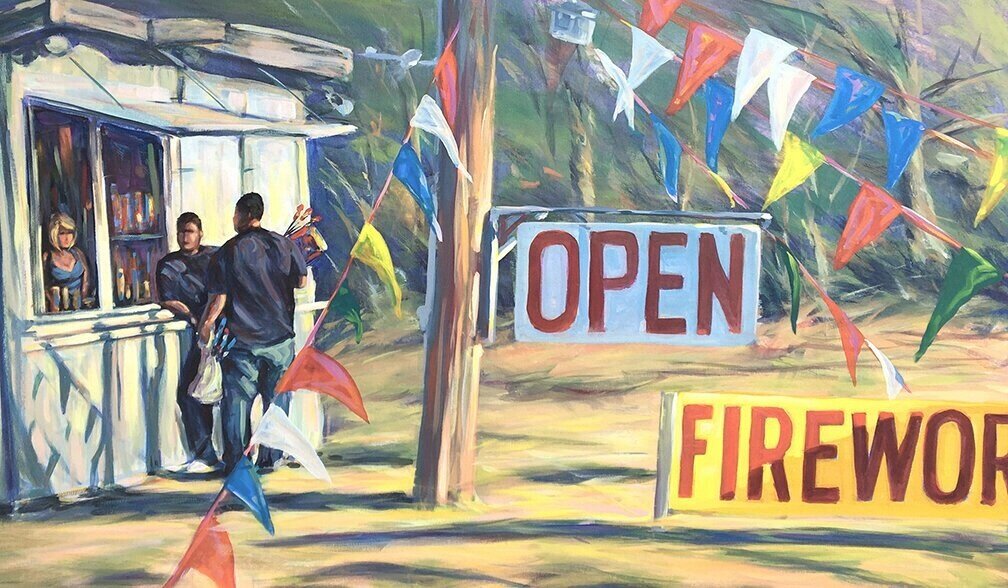
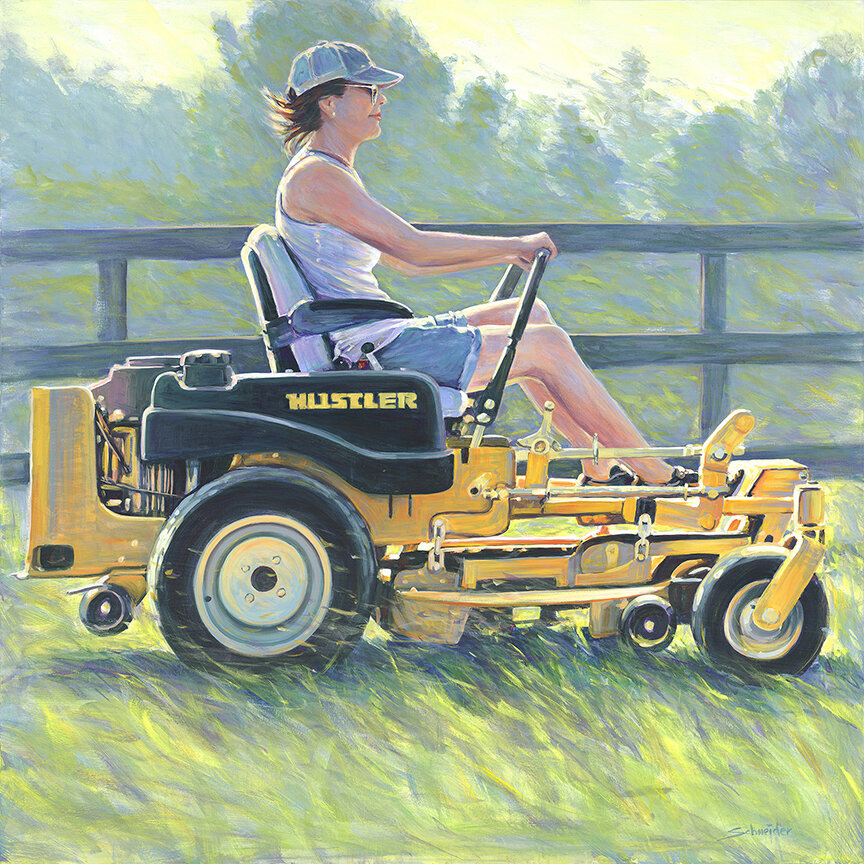

AAS: Steven, you are originally from South Louisiana. What brought you to Northwest Arkansas?
SS: Yes I am originally from South Louisiana, born in Lake Charles. As we all know, they just experienced a devastating hurricane… I have family and friends that have been heavily impacted. I’ve been through a few hurricanes and it’s a pretty traumatic experience so my heart goes out to them.
My wife Cynthia and I one day decided, after 13 years, that we were ready to abandon the rigorous life of restaurateurs and experience a simpler lifestyle in an area that offered great quality of life amenities. We both love nature, hiking, kayaking and I grew up taking fishing trips to the White River with my Dad and brother. I always loved this area and after a few exploratory trips we decided to move. As an artist, and my wife an avid art collector, we were very intrigued and excited by the potential that the Crystal Bridges Museum of American Art had to offer this area. Cooler weather, relatively few mosquitos in comparison to South Louisiana, NO HURRICANES, and a laid-back community with possibilities of artistic growth seemed a great fit for us.
AAS: Hanging art for sale in a restaurant is great for the restaurant, but I’m not sure that it is always successful for the artists. Would you talk more about that business model and how you made it work?
“In my opinion, that is one of the most powerful things art does - initiate conversations and interactions between human beings.”
SS: Our approach to displaying and selling art in the restaurant was as an extension of our creative environment. We displayed rotating art shows every 6 weeks. We had art opening receptions that included local singer songwriters, great wine and Cynthia would prepare an amazing spread of various locally inspired hors d’oeuvres. We both typically curated and hung the show and made sure to have the best possible lighting and presentation. I had my gallery next door and we would coordinate opening events to make it an artistic night worth celebrating. Sales were sporadic, but consistent, and everyone agreed it was worthwhile. Great food and drink, music, art and stimulating conversations… we had some special times.
Also, not all artists are able to secure gallery representation and so public spaces, such as a restaurant, offer the opportunity for new artists to gain some exposure and for individuals who may not typically go to an art gallery, experience original art.
AAS: You have a degree in zoology and art from the University of Louisiana at Lafayette. That is sort of an interesting combination. Were you thinking medical school?
SS: Yes, I was in the pre-med program at, what was then USL (University of Southwestern Louisiana) with a major in biology and I minored in fine art. I really enjoyed most of my biological and science subjects and appreciate now having a basic understanding of how living things are structured and function. I found myself slowly gravitating to the more experimental and expressive lifestyle of an artist and away from the more disciplined, stoic lifestyle of a pre-med student. There was great prosperity at that time in Lafayette due to the oil industry boom which created an environment rich with great food, music, art, dancing. The creative energy was quite captivating… “joie de vivre”. After graduating I had to find a way to make a living so I enrolled in the advertising/ design program and moved in that direction. Advertising (graphic) design has proven to be a very consistent way for me to generate income while also pursuing my fine art interests. I moved my focus to commercial illustration and then as my fine art sales increased, I was able to scale back my graphic design and illustration work.
Totome, 80” x 20”, driftwood, mechanical parts, crystal
AAS: You are creating both paintings and sculptures. Have you always done both?
SS: I was always able to take imagined ideas and bring them to life. I did a few realistic clay models in high school and series of 3D creations later but it wasn’t until I moved to Donaldsonville, Louisiana in 2002 that I seriously attempted something similar to what I am doing now. Donaldsonville was located on the Mississippi River and my wife and I would take walks along the batture (river side of the levee) and walk our dogs. There was a lot of washed up debris along the bank as well as some amazing driftwood. I started collecting some of the cool pieces and decided to turn the “trash into treasure”. I selected unique pieces as inspiration and sketched out some ideas based upon those forms. That was the start of what I call my RiverSpirit series. I discovered that the cutting, sawing, drilling, bending wire, shaping, painting, gluing was satisfying on many levels. At the time of creating the RiverSpirit series I had also started doing more plein air landscape painting. After taking a workshop with artist Sammy Britt I discovered a love of outdoor painting and was intrigued and fascinated by the insights that this method had to offer. Britt had studied with Henry Hensche. Hensche studied with Charles Hawthorne in Provincetown, Massachusetts and developed a method of teaching Hawthorne’s approach to painting that emphasized, among other things, a colorist approach vs a tonal approach to painting. Specifically, every light plane and every color plane was a different hue. This workshop gave me some useful insights into “in the moment painting” and ways to address some of the challenges that come with it.
After completing a number of pieces I decided to have a show at my gallery with the RiverSpirit sculptures and plein air paintings. I also created a short film of our dogs running along the river bank and showed that during the opening. One interesting awareness for me from this show was from visitors that commented that they usually felt intimidated or uncomfortable at art openings or had never been to an art opening and didn’t know what to do. So from then on I have made the effort to make sure folks felt comfortable and encouraged their participation. It’s ok to comment if you don’t like something. If you have a question for the artist, ask it. If a piece makes you laugh, laugh. I believe art is meant to be a free expression for both the artist and the viewer. This also has helped me to communicate better and become more approachable.
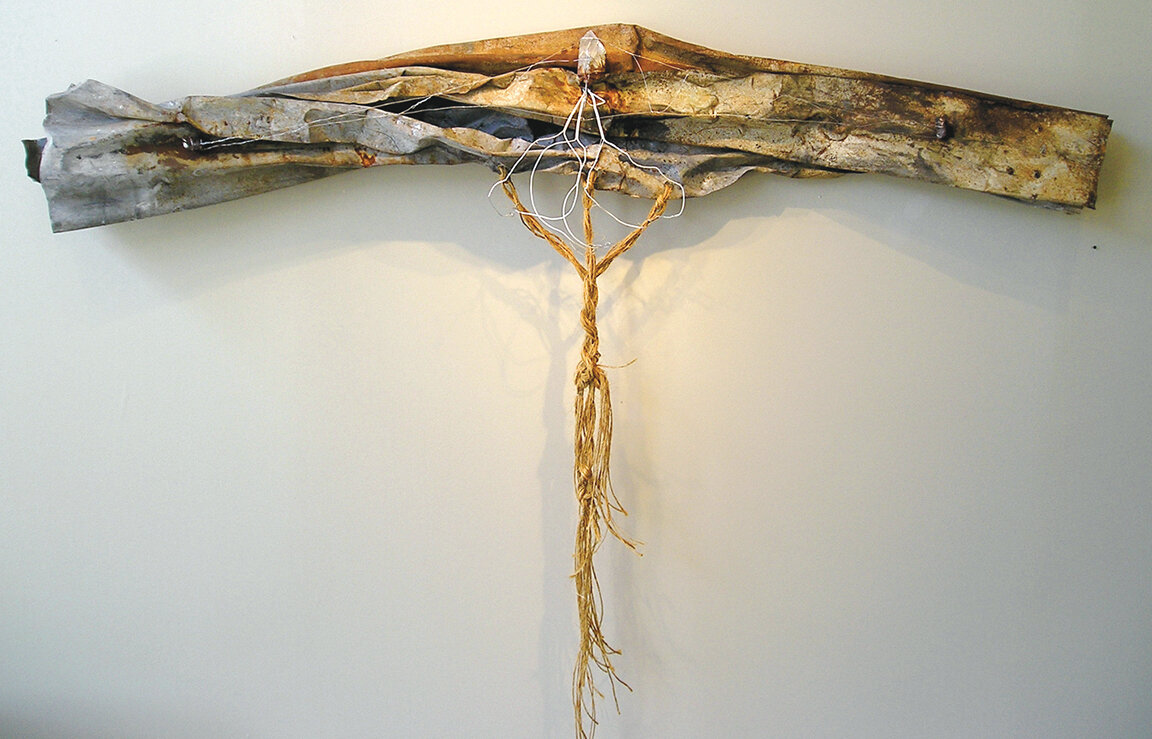
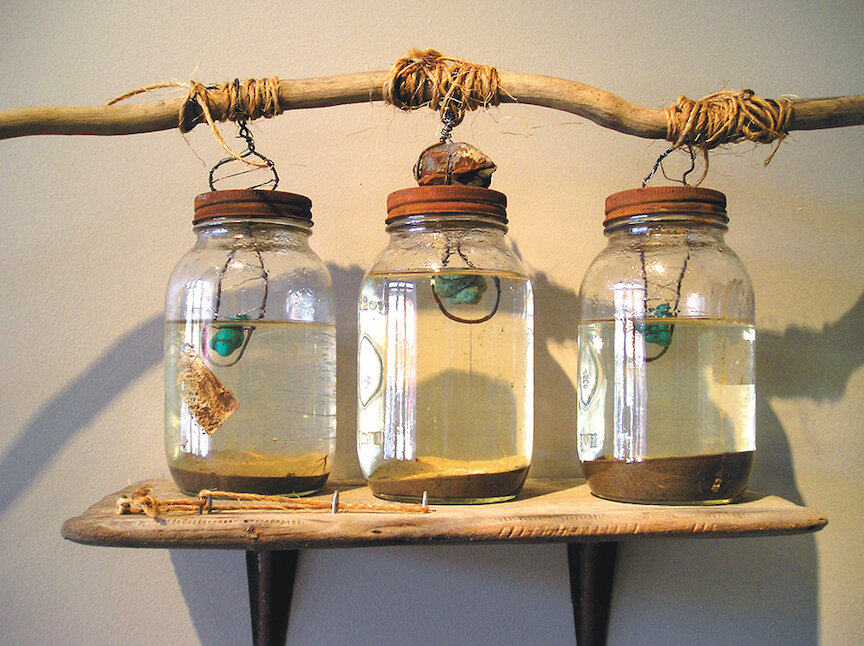
AAS: What is the art scene like in Northwest Arkansas?
SS: There are many talented folks here. I have met some wonderful artists and developed some great friendships. Opportunities for making income and for exhibiting are improving but most artists I meet still struggle to make a living and to find venues to show their work. From what I have seen, Rogers is showing promise and making a great effort to support the arts. In Fayetteville there are a few independent commercial galleries as well as some 501(c)(3) galleries that can’t survive financially on sales alone so they have become more focused on grant opportunities and donations to keep the doors open. Although I find most folks are supportive of the arts, sales are a little anemic. When I first moved here I anticipated that Crystal Bridges would attract and motivate collectors and that art sales would become more robust. It hasn’t gotten to that level yet but I’m hopeful and optimistic that within the next 10-15 years, with interest growing in the arts driven mostly by major museums like Crystal Bridges and The Momentary, and with the expansion of University of Arkansas art department, along with growing support from the surrounding communities, purchase of original art will improve. As artists we know that the arts create community, and lift the human spirit. I think educating the public about collecting local, original art is crucial to the arts thriving in this area.
“…when I start a new painting or begin work on a new sculpture, I still get a feeling of nervous anticipation. I just can’t wait to see what happens.”
AAS: You show your work quite often and have been in the Delta Exhibition. What do you like and not like so much about exhibitions?
SS: Initially I chose art making as a profession partially because I was very shy and thought that if I could find a way to create images and could sell through a gallery that the gallery would mail me a check and I wouldn’t have to get out of my comfort zone… pretty naive. After my first few shows and a couple of sales, I quickly realized that most collectors really wanted to meet me as well and get a personal feel for why and how the work was created. I have learned to embrace that and now enjoy talking to folks about my art and the inspiration behind it. I find openings generally too chaotic to have meaningful one-on-one conversations and have come to view them as more of a social happening with networking and sharing ideas. The surprise visitor is always a pleasure… an unexpected person that wanders in and you feel an immediate connection. In my opinion, that is one of the most powerful things art does - initiate conversations and interactions between human beings.
AAS: Steven, let’s talk about your process. You do a lot of sketching and photography, which you reference in some of your works. Are you one to always have a sketch pad with you?
SS: I usually have one close by or can find a pen and scrap piece of paper or napkin. Along with writing and note taking, sketching is an integral part of my creative process. I also utilize plein air studies for larger studio landscapes. I have to draw or write about an idea or concept as it appears in my mind. It is usually something fleeting that is triggered by a particular time in space and I find it works best for me to capture the essence of it as soon as possible. I can always refine it later. The sketch book, photography and plein air studies give me the luxury of time. A lot of my problem solving and refining ideas is through sketching.
Goshen Sky, 16” x 16”, acrylic on canvas
AAS: I think your landscapes are wonderful and especially love Goshen Sky. Would you talk about that painting and how its complexity contrasts with the simplicity of Cove? Both paintings convey the beauty of the Arkansas landscape but in very different ways.
SS: This has been an interesting and exciting evolution for me because it demonstrates one of the things I really love about my life as an artist and lies at the heart of why I continue to create. The excitement that comes from the discovery of, what I feel, is a new and more effective way for me to communicate visually. I really enjoy plein air painting and when I first started I was determined to create the best interpretation of what I was experiencing. Not in a photo realistic way but more as an impressionistic looser style. I think Goshen Sky is a good example of that effort and still remember getting to the point when I felt I was done… that little voice in my head saying… “drop the brush and step away from the canvas!” Sometimes a brush stroke that is spontaneous and feels great, but is a little off, needs to be left alone. Knowing when to stop is still a challenge for me. I have also experimented with non-representational art techniques and appreciate the side of mystery that is presented to the viewer… leaving room for them to become involved in finishing the visual story. With the painting Cove I am utilizing bits from all these forms. Simplified light and shadow planes, the juxtapositioning of grays and saturated colors, complementary coloring layering and working in a spontaneous “in the moment” way. I have several works planned in this style and am excited about investigating further.
Cove, 36” x 96”, acrylic on panel
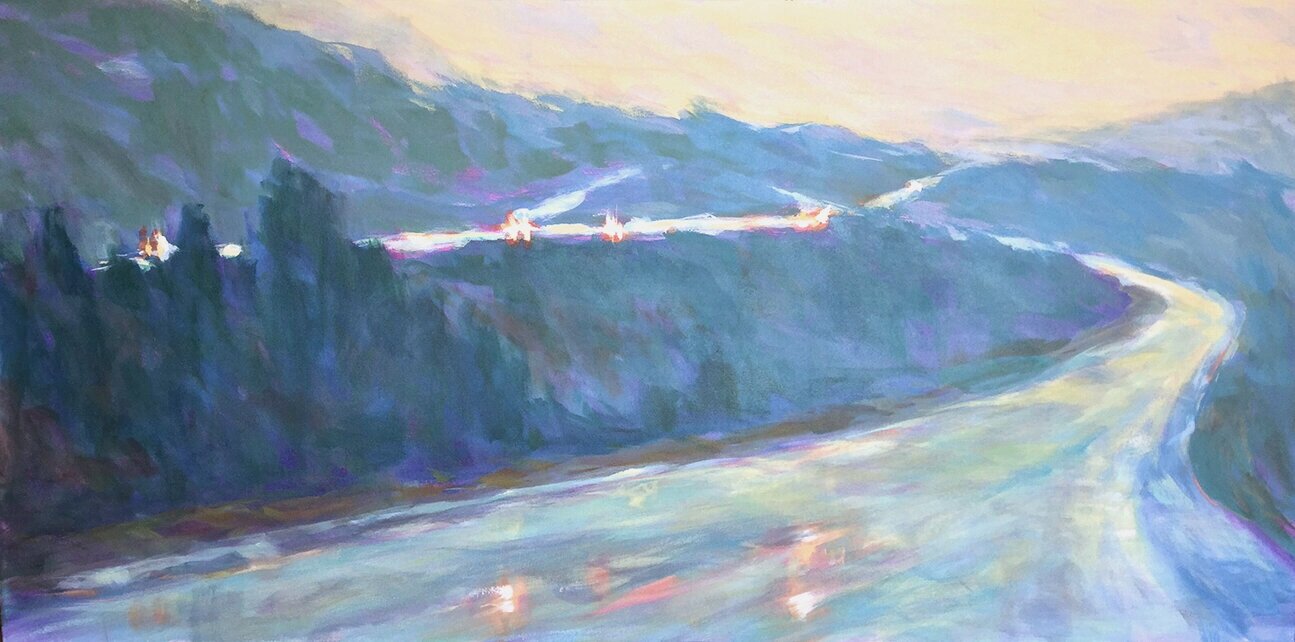
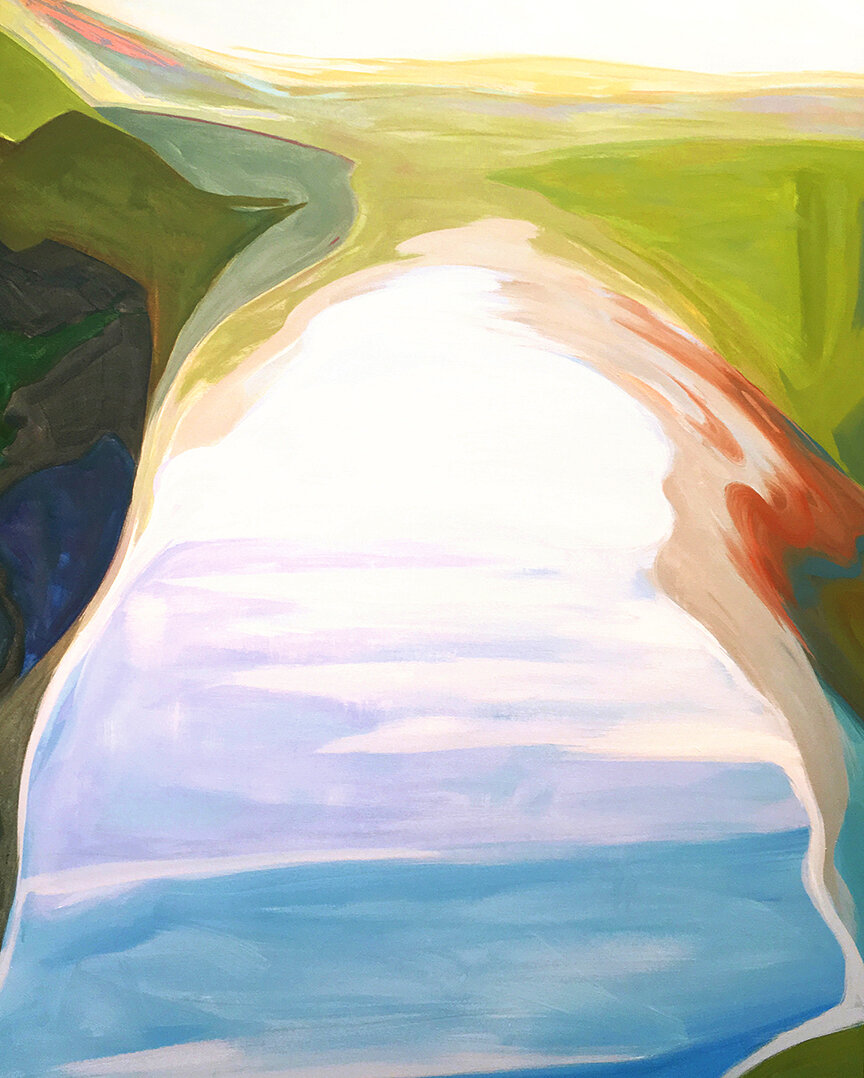
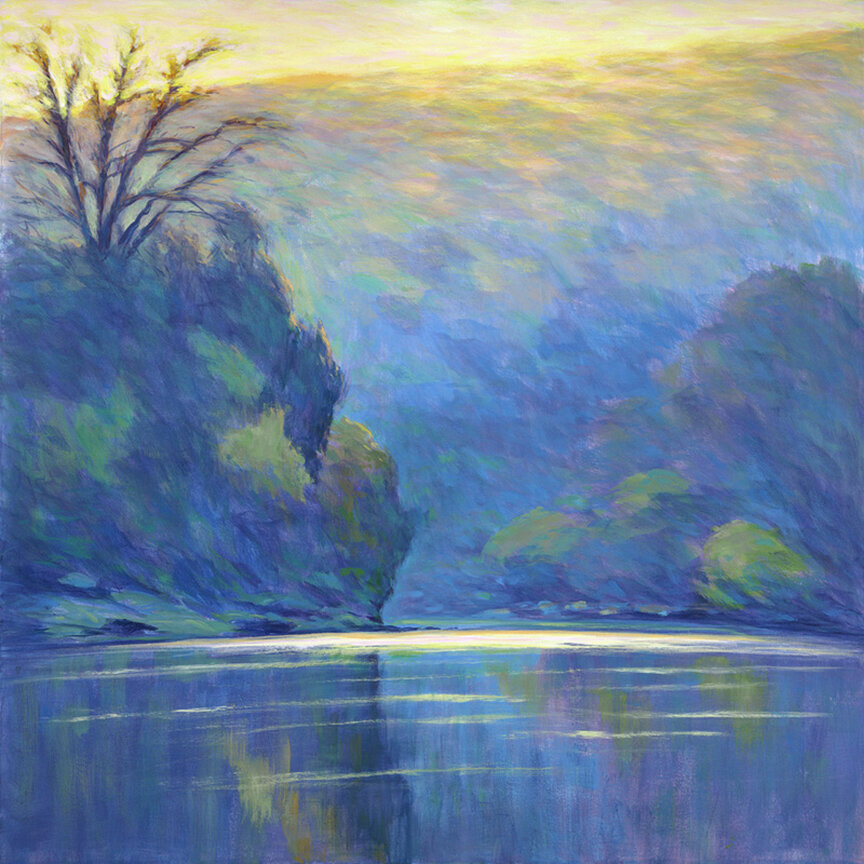
Olds 88, 46” x 46”, acrylic on canvas, 2015 Delta Exhibition
AAS: Olds 88 brought me back to my dad washing our car and making the bumper shine. Where did you find that car? It must be a ’56 model?
SS: Great guess! My best research dates it as ’55. Shortly after moving to Goshen from South Louisiana I learned a few things rather quickly. One, Everything I was doing as a landscape painter in the Delta of Louisiana was not working in the Ozarks of Arkansas. And two, the winters were very cold. Plein air painting, for me, was stalled… I wasn’t inspired and had nothing familiar to paint. With camera in hand and looking for inspiration, I discovered a salvage yard close to my studio. I have always loved the shapes and styling of cars from the 60’s and early 70’s and hope one day to own either a vintage GTO or SS anything.
As I explored the salvage yard I came across some vintage autos and I thought it would be fun to do oversized studio paintings of them. An homage to a time when “style” was king and the automobile represented a new-found independence and the freedom to explore. Seeing them nested in briars and weeds with signs of rust and decay inspired me to document their form to preserve a familiar time in our recent history. In fact, Olds 88 is from a series created from the salvage yard finds and was selected to be in the Delta Exhibition in 2015. It was fulfilling and an honor to be a part of that show and I was very pleased that a woman from Houston, Texas purchased it within a week of the opening. Her Dad drove an Olds 88 and she had to have it. When I delivered the piece it was nice to connect with her and listen as she relived her memories growing up.
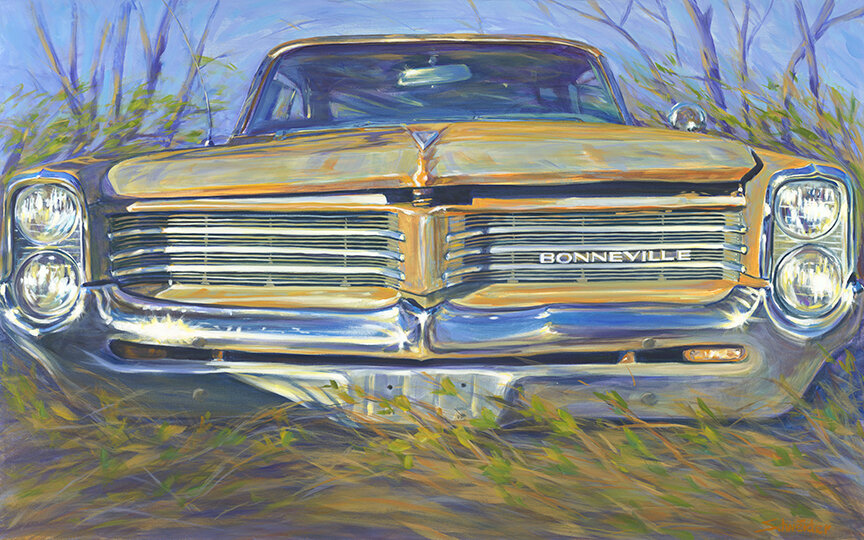

AAS: You describe your artwork as ‘iconic Americana imagery of everyday life’. Looking back, were you painting everyday life when you were in your 20s and 30s?
Hoops, 60” x 60”, acrylic on canvas
SS: I started painting in 1973. I was at LSU (Louisiana State University) in pre-med and taking art classes. Most of the initial paintings I did were pen and ink with watercolor washes for coloring. They were imaginative and psychedelic. At that time I was inspired by the Surrealists, Dali, Magritte and Ernst. I left LSU after one year and moved to Lafayette, Louisiana.
I worked driving delivery trucks for a metal supply company. In my free time I played music, enjoyed the fun times and sewed a couple wild oats. I still drew and sketched but nothing serious until I started USL (University of Southwestern Louisiana now UL) in 1976 and took some painting classes. That began my only and limited formal art training. It was during those years at USL that I started to develop a connection to the creative process and began working on my painting skills. Since I had grown up loving the outdoors and lived in an area that was a big sugarcane and rice producing area I gravitated to that familiar imagery. The farm implements, distant farm structures, and the rows with vanishing repetitive perspective were used to add scale and depth. I painted what appealed to my senses and what was familiar.
My heritage, being mostly French and German lineage, has shaped my style. I understand now that machines and manmade things appeal to my German logic and sense of order while the looseness associated with a fleeting cloud or a quick brush stroke appeal to my French passion for movement and beauty.
AAS: Who are some of your favorite artists? Which artists inspire you?
SS: A brief list that quickly comes to mind are Van Gogh, Braque, Hopper, Benton, Dali, Magritte, Ernst, Duchamp, Kandinsky, Klee, Hans Hofmann, Bosch, Vermeer. I’ve always enjoyed the graphic images of Warhol, Diebenkorn and Franz Klein as well as the innovative approaches of O’Keefe, and Frankenthaler. On a closer to home level, I was inspired by the late great Louisiana landscape artist Elemore Morgan, Jr. who was an art professor at USL. He was so humble and dedicated to his art. He was always approachable and an amazing and inspirational colorist and landscape painter.
“As I am getting older, and maybe gaining some wisdom and perspective, I am trying to get away from feeling anxious and troubled about ‘where I am not’ and trying to find peace and satisfaction with ‘where I am’.”
Steven in his studio.
AAS: After some 40 years as a professional artist, what still makes you get up and paint? Do you consider yourself a disciplined artist?
SS: Painting and being an artist is a big part of what I identify as being “me”. I have done it for so long that it is embedded in my psyche. As a self-employed person I have worked almost every day of my life creating something.
I do consider myself disciplined when it comes to my art projects and obligations but also very much appreciate time spent fishing, boating, kayaking, hiking, playing music, cooking and socializing with family and close friends. Those things help bring balance and joy into my life. As I am getting older, and maybe gaining some wisdom and perspective, I am trying to get away from feeling anxious and troubled about “where I am not” and trying to find peace and satisfaction with “where I am.”
Beyond all that, to this day, when I start a new painting or begin work on a new sculpture I still get a feeling of nervous anticipation. I just can’t wait to see what happens.

